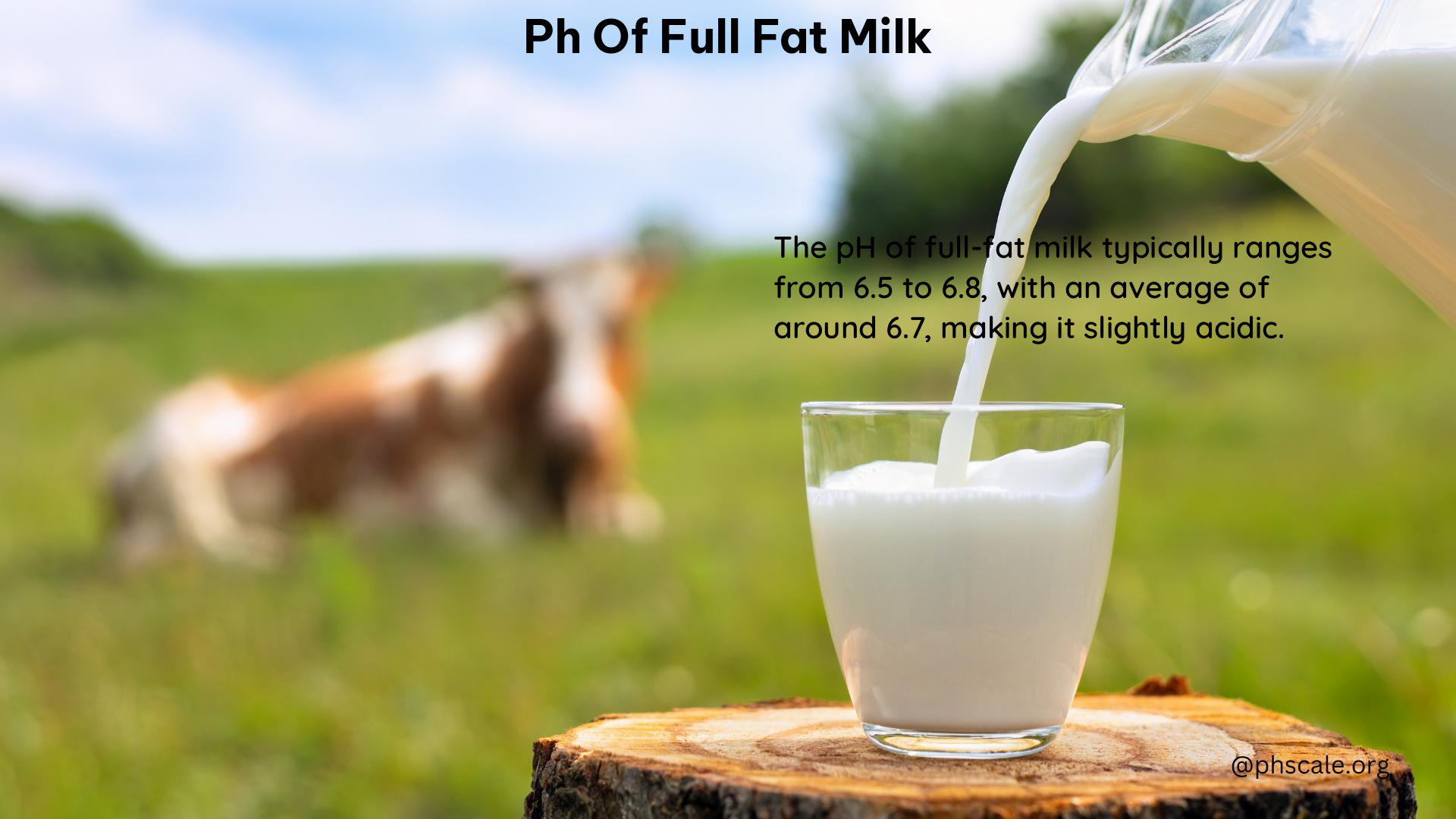The pH of full-fat milk is slightly acidic, typically ranging from 6.5 to 6.7. This acidity is primarily due to the presence of lactic acid, a natural byproduct of the milk production process. Understanding the pH of full-fat milk is crucial, as it can impact various aspects of its quality, storage, and potential health implications.
pH Range of Full Fat Milk
The pH of full-fat milk can vary depending on several factors, but the typical range is as follows:
- pH 6.5 to 6.7: This is the standard pH range for fresh, high-quality full-fat milk.
- pH 5.82: A specific study has measured the pH of full-fat milk to be 5.82, which is more acidic than the typical range.
Factors Affecting the pH of Full Fat Milk

The pH of full-fat milk can be influenced by several factors, including:
Storage Conditions
The pH of milk can change over time as it goes sour. As milk is stored, the lactic acid content increases, leading to a more acidic pH.
Processing Methods
Different processing methods, such as pasteurization, can affect the pH of milk. The specific processing techniques used can alter the milk’s chemical composition and, consequently, its pH.
Type of Milk
The pH of milk can vary depending on the type of milk, such as high-protein milk or sweetened milk. These variations in milk composition can influence the overall pH.
Balancing pH Levels
Maintaining a healthy pH balance in the body is essential for overall well-being. Here are some strategies to help balance pH levels:
Dietary Balance
Consuming a balanced diet with both acid-forming and alkaline-forming foods can help maintain a healthy pH balance in the body.
pH Testing
pH levels can be tested using pH or litmus paper, which can indicate whether the body is acidic or alkaline. This information can guide dietary and lifestyle adjustments.
Contaminants and Chemicals
Full-fat milk can contain various contaminants and chemicals that can affect its pH and overall quality, including:
Lactic Acid
Milk naturally contains lactic acid, which contributes to its acidic nature.
Other Contaminants
Milk can also contain other contaminants, such as bacteria, which can further impact its pH and quality.
Solutions and Alternatives
If you’re concerned about the pH of full-fat milk, there are several solutions and alternatives to consider:
Alkaline-Forming Foods
Consuming alkaline-forming foods, such as fruits and vegetables, can help balance the body’s pH levels.
Alternative Milks
Plant-based milks, like almond milk or soy milk, can be used as alternatives to dairy milk, offering different pH profiles.
In conclusion, the pH of full-fat milk is slightly acidic, typically ranging from 6.5 to 6.7. This acidity is primarily due to the presence of lactic acid, a natural byproduct of the milk production process. Understanding the factors that can affect the pH of full-fat milk, such as storage conditions, processing methods, and milk type, is crucial for maintaining its quality and ensuring a balanced pH in the body. By incorporating alkaline-forming foods and exploring alternative milk options, individuals can find ways to manage their pH levels and maintain overall health.
References
- Healthline. (2018). The pH of Milk and Plant-Based Alternatives: Effects on the Body. Retrieved from https://www.healthline.com/health/ph-of-milk
- Sigma-Aldrich. (n.d.). pH of Milk and Milk Products. Retrieved from https://www.sigmaaldrich.com/US/en/technical-documents/protocol/analytical-chemistry/photometry-and-reflectometry/ph-of-milk-and-milk-products
- NCBI. (2023). Effect of various types of milk on salivary pH among children. Retrieved from https://www.ncbi.nlm.nih.gov/pmc/articles/PMC10500012/
